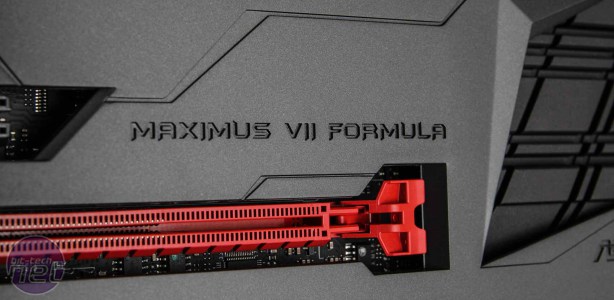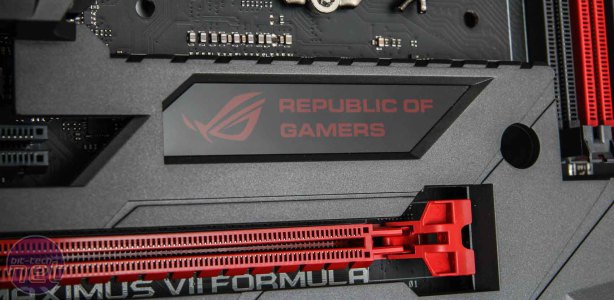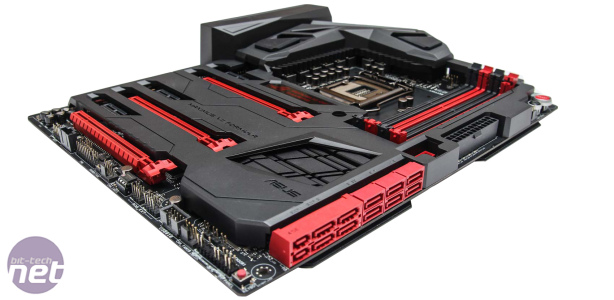
Performance Analysis
At stock speed, many of our benchmarks are fairly closely-bunched, which goes to show how optimised motherboards are these days. There was barely 100 points separating the top and low scorers in the overall score in our Media Benchmark suite, which focuses on image editing, video encoding and multi-tasking.The game tests too, didn't reveal any hidden problems; the Maximus VII Formula was mid-table but again there were slim margins between top and bottom. The on-board audio produced some of the best results we've seen, with the first dynamic range result over 100dBA, and noise level below -100dBA. Total Harmonic Distortion was also slightly lower than the Maximus VII Gene - a great result, although one hiccup in the testing was a very high result for Stereo Crosstalk, which we were unable to iron out. Given how the other results are exactly where we expected the Maximus VII Formula to be, this could possibly be an anomaly but we'll look into it and report back if anything changes.
Click to enlarge
There are no M.2 results as the Maximus VII Formula annoyingly doesn't support 80mm M.2 SSDs. However, its SATA 6Gbps numbers were on the ball, although as usual, it's best to avoid the ASMedia-powered ports with modern SSDs. Power consumption was fairly high at idle but came back into line once we'd overclocked it, with the extra loadline calibration required likely one of the culprits that saw the Maximus VII Formula draw a fair bit more power than the Hero and Ranger once overclocked under load.
Click to enlarge
Hitting 4.8GHz resulted in a tidy boost to the overall score in the Media Benchmark suit, with the score of 2,892 being a top five result. With similar clock speeds to the other boards on test here, there wasn't much to report in the game tests either, with the results here fairly typical.

Click to enlarge
Conclusion
If you're looking for a motherboard to shove in a case, overclock and forget about, the Asus Maximus VII Formula isn't it. It's hugely expensive, even compared to Asus's own sub £150 ROG offerings, which include the Hero, Ranger and Gene, and with a decent all-in-one liquid cooler at least, there's not much to be gained overclocking-wise either.However, as we mentioned with its predecessor, the extra £100 or so does result in some useful additions. For starters, the integrated waterblock works well and will save you over £80 on a third party model for the VRMs. However, Asus's Formula boards are also very popular with third party waterblock manufacturers, who usually cook up lust-worthy full-cover blocks that aren't available for many other boards. There's also an 802.11ac dual band and Bluetooth WiFi adaptor and SATA Express, although you'd need a 60mm or shorter M.2 SSD. Then you've got the decent on-board audio so the extra outlay is pretty much covered. For a limited time, it's currently available with a redeemable copy of Watch Dogs too.
Of course, if you're not fussed about water-cooling the motherboard, have an Ethernet cable ready to plug into it and intended to use the on-board sound anyway, then it likely won't represent very good value for money. This board begs to be water-cooled and overclocked and has all the credentials to take things further than water-cooling too.

-
Speed38 / 45
-
Features28 / 30
-
Value19 / 25


MSI MPG Velox 100R Chassis Review
October 14 2021 | 15:04










Want to comment? Please log in.